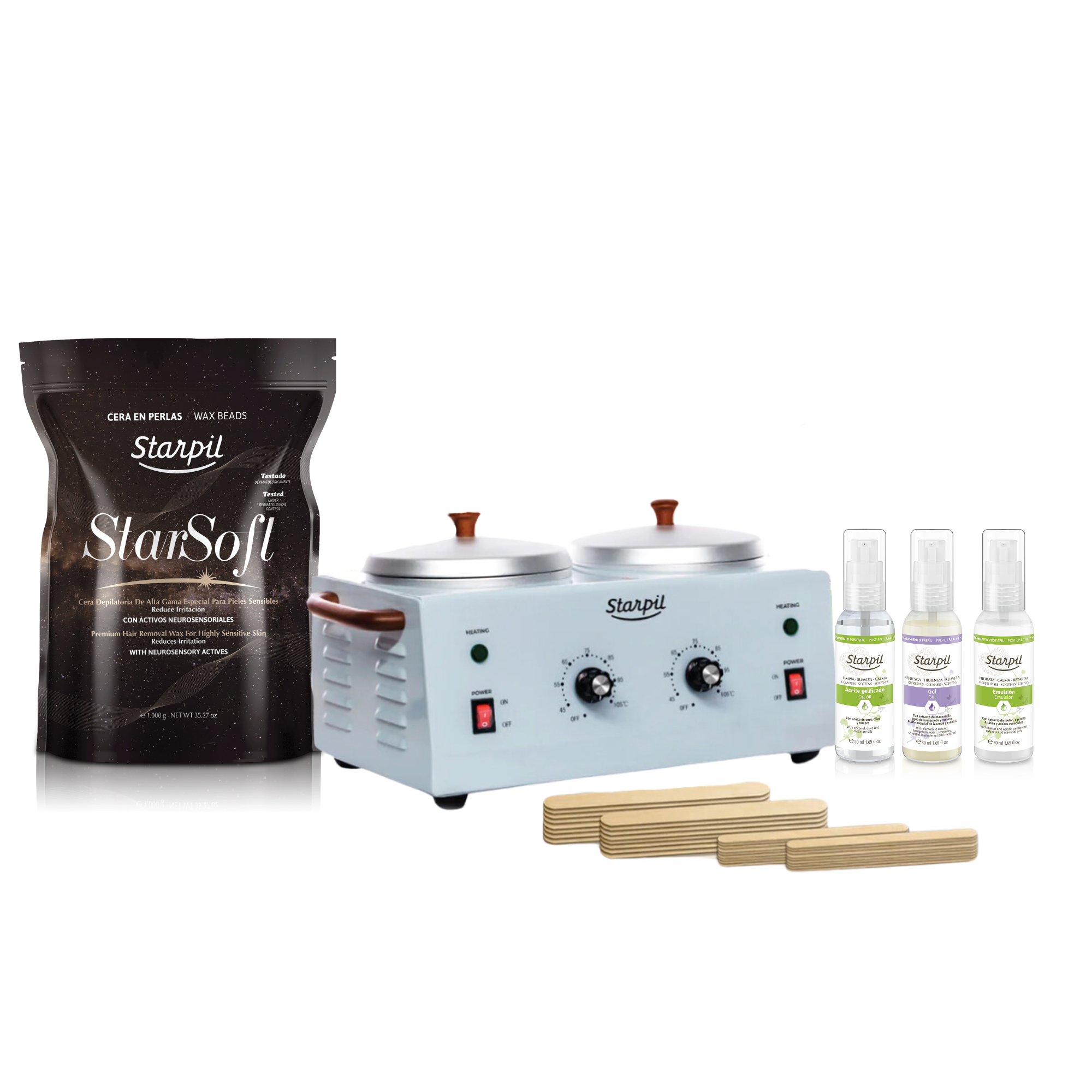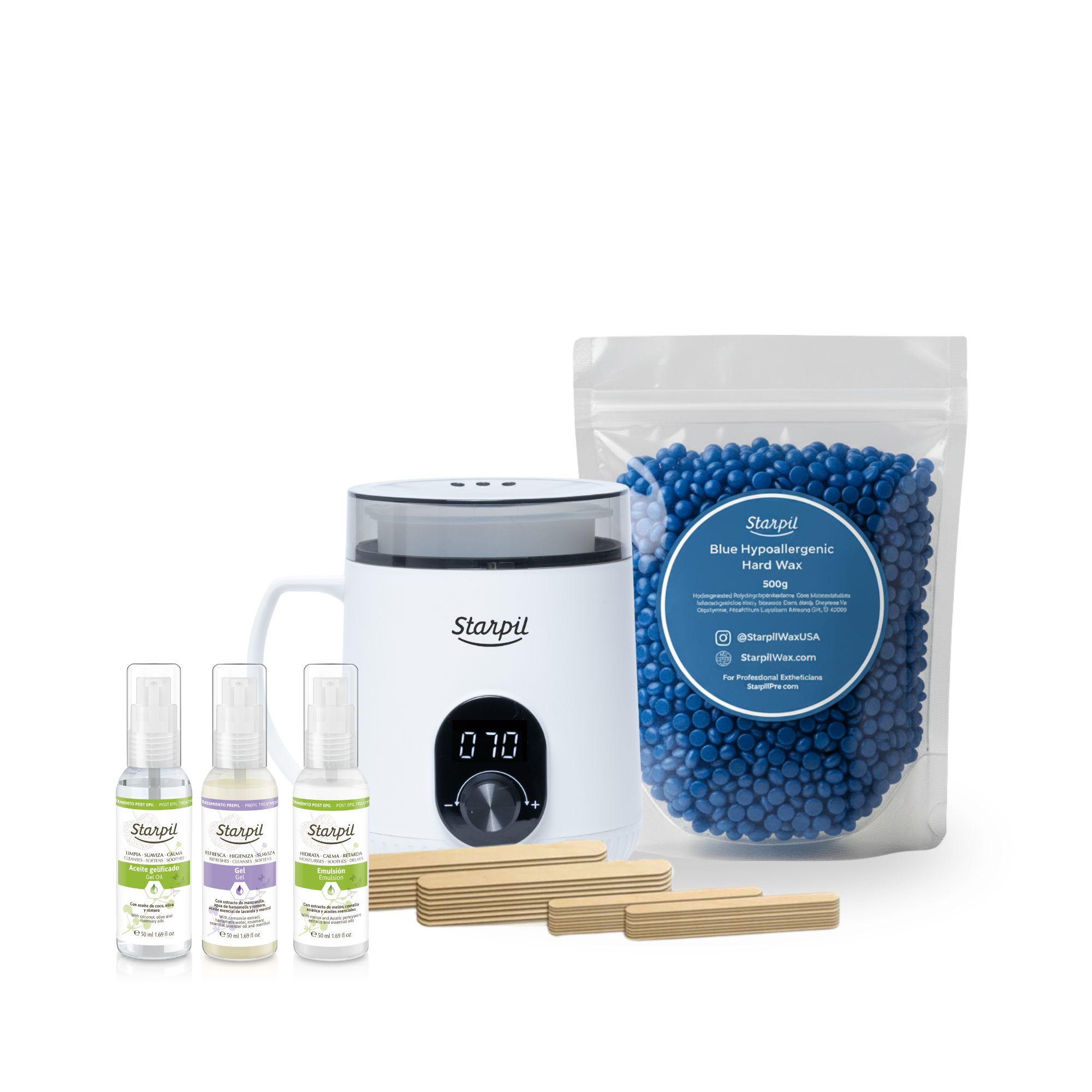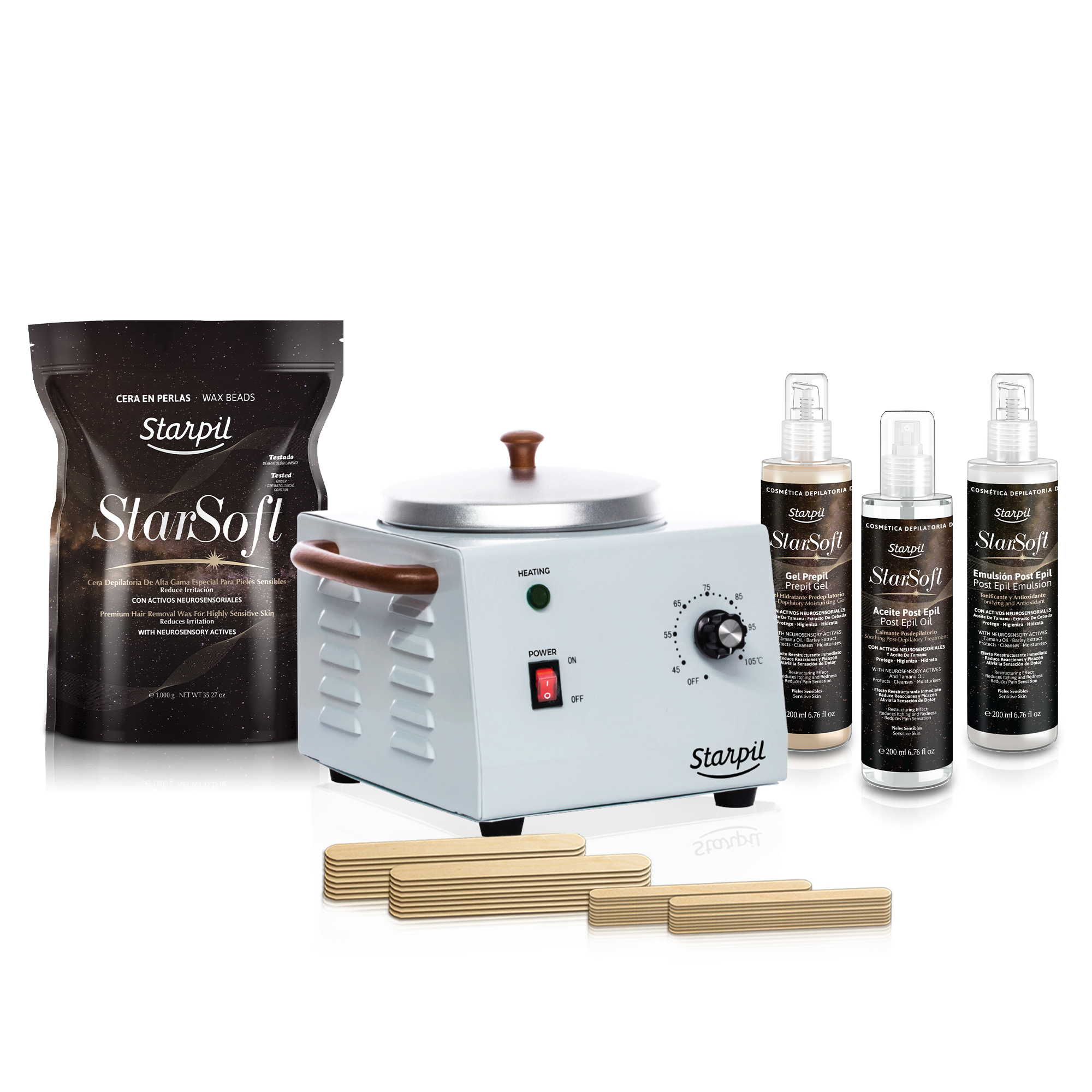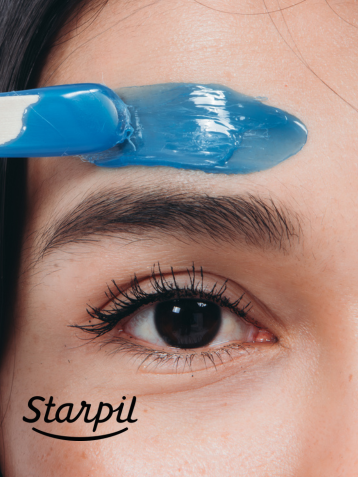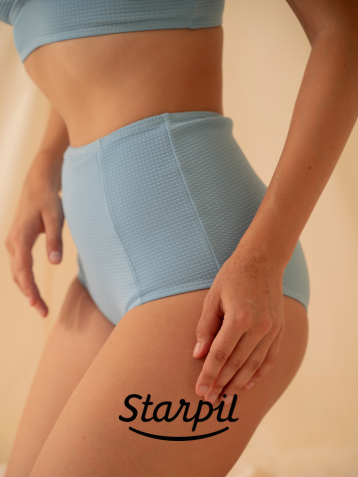How to Get Rid of Ingrown Hairs: Expert Tips for 2026

If you've recently started waxing, you might have encountered a common but frustrating issue: ingrown hairs. These pesky little bumps can be uncomfortable and unsightly, but don't worry – with the right knowledge and techniques, you can prevent and treat them effectively.
Table of Contents
In this guide, we'll share expert tips on how to keep your skin smooth and ingrown-free. If you’ve already gotten an ingrown hair or two, we’ve also included treatment strategies to get rid of them quickly.
READ: Can You Shave Between Waxing?

Understanding Ingrown Hairs
Before we dive into prevention and treatment, let's understand what ingrown hairs are. An ingrown hair occurs when a hair grows back into the skin instead of rising up from it. This can happen when hair is cut or removed in a way that allows it to curl back into the skin as it regrows. Ingrown hairs can cause inflammation, redness, and sometimes even infection.
READ: When Does Armpit Hair Grow? Hair Growth for Underarm Waxing
How to Prevent Ingrown Hairs
Preventing ingrown hairs before they form is the best way to keep your skin in its best condition. The following techniques will help stop ingrowns from forming after hair removal:
Proper Pre-Wax Preparation
The key to preventing ingrown hairs starts before you even apply the wax:
- Exfoliate gently 24-48 hours before waxing to remove dead skin cells.
- Ensure your hair is the right length (about 1/4 inch) for effective waxing.
- Clean the area thoroughly to remove any oils, bacteria, or dirt.
- Apply a Pre-Wax Gel to cleanse skin before your session.
Use High-Quality Wax
Not all waxes are created equal. Using a high-quality wax, like those offered by Starpil Wax, can make a significant difference:
- Look for waxes formulated to grip the hair, not the skin, like hard wax.
- Hard waxes are often gentler and more effective for sensitive areas prone to ingrowns.

Perfect Your Waxing Technique
Proper waxing technique is crucial for preventing ingrown hairs:
- Apply wax in the direction of hair growth.
- Remove the wax against the direction of hair growth in one quick motion.
- Hold the skin taut while removing the wax to ensure complete hair removal.
Post-Wax Care
What you do after waxing is just as important as the waxing itself:
- Apply a Post-Wax Oil to remove wax residue and hydrate skin.
- Apply a Post-Wax Lotion to soothe the skin and moisturize.
- Avoid tight clothing for 24-48 hours to allow the skin to breathe.
- Stay out of hot showers, saunas, and direct sunlight for at least 24 hours.
- Avoid activities that might cause sweating or friction for at least 24 hours, including exercise and sex.
- Apply an Ingrown Hair Serum 24 hours after waxing to cleanse the skin and dissolve ingrowns before they form.
Regular Exfoliation
Keeping your skin exfoliated between waxing sessions is key:
- Start exfoliating 24-48 hours after waxing, then 2-3 times a week.
- Use a gentle scrub or exfoliating glove to remove dead skin cells.
- Focus on areas prone to ingrown hairs, like the bikini line or underarms.
READ: Waxing 101: Which Direction Should You Pull the Wax?

How to Treat Existing Ingrown Hairs
Despite your best efforts, you might still encounter an ingrown hair. Here's how to treat them safely:
Don't Pick or SqueezeIt's tempting, but resist the urge to pick at or squeeze ingrown hairs:
- This can lead to infection and scarring.
- Instead, try the following gentle treatments.
A simple but effective treatment:
- Apply a warm, damp cloth to the affected area for a few minutes.
- This can help soften the skin and encourage the hair to come to the surface.
Once the area is no longer irritated:
- Use a gentle exfoliating scrub.
- Move in circular motions to remove dead skin and help the hair break through the surface.
24 hours post-wax, apply an Ingrown Hair Serum to dissolve ingrowns before they form.
- Clears dirt and bacteria and gently exfoliates the skin.
- Dissolves hairs trapped underneath the skin’s surface.
Known for its antibacterial properties:
- Mix a few drops of tea tree oil with a carrier oil like coconut oil.
- Apply to the affected area with a cotton swab.
- Do this once or twice daily until the ingrown hair heals.
This beta-hydroxy acid can help exfoliate the skin:
- Use a product containing 1-2% salicylic acid.
- Apply to the ingrown hair area once daily.
- Be cautious if you have sensitive skin and always do a patch test first.
For particularly inflamed or itchy ingrown hairs:
- Apply a small amount of over-the-counter hydrocortisone cream.
- Use sparingly, as overuse can thin the skin.

When to Seek Professional Help for Ingrown Hairs
While most ingrown hairs can be treated at home, some situations warrant professional attention:
- If an ingrown hair becomes infected (increased redness, swelling, or pus).
- If you have chronic ingrown hairs that don't respond to home treatment.
- If you notice any changes in the appearance of moles or skin surrounding ingrown hairs.
Long-Term Ingrown Hair Prevention Strategies
To minimize ingrown hairs in the long run:
- Use hard wax for hair removal, which is gentler on the skin.
- If you have particularly sensitive skin, use a formula created specifically for your skin type.
- Maintain a consistent waxing schedule to train your hair growth.
- Stay hydrated and eat a balanced diet to promote healthy skin and hair growth.
- Wear loose, breathable clothing, especially in areas prone to ingrown hairs.
- Consider using a daily chemical exfoliant between waxing sessions to keep pores clear.
READ: Exfoliation After Waxing: When and How to Do It Right
Final Thoughts
Dealing with ingrown hairs can be frustrating, but with these expert tips, you're well-equipped to prevent and treat them effectively. Remember, consistency is key—stick to a good skincare routine, use high-quality waxing products, and be gentle with your skin. With time and practice, you'll master the art of smooth, ingrown-free skin.
At Starpil Wax, we're committed to helping you achieve the best waxing results, regardless of your skill level. Our range of salon-quality waxes and pre and post-wax care products are designed to minimize irritation and ingrown hairs, giving you salon-quality results in the comfort of your own home.
How to Get Rid of Ingrown Hairs | FAQs
Why do I get ingrown hairs after waxing even with proper aftercare?
Ingrown hairs after waxing can occur despite diligent aftercare due to several biological and mechanical factors that sometimes override preventative measures. Hair structure and genetics plays a significant role, as those with coarse hair are more prone to ingrowns.
The specific body area significantly impacts the likelihood of ingrowns, with areas like the bikini line and underarms more susceptible to ingrown hairs. Hormone fluctuations affect hair growth patterns, with increased androgens potentially creating thicker, more ingrown-prone regrowth even with perfect aftercare compliance, and things like clothing friction or exercise can also contribute to the development of ingrowns.
What professional-grade products are most effective for preventing ingrown hairs after waxing?
Professional-grade ingrown hair prevention products contain active ingredients at higher concentrations than retail options, delivering superior results through specific formulation advantages. Starpil Ingrown Hair Serum dissolves bacteria, dirt and buildup while also keeping pores clear and preventing ingrowns before they form. Made with ingredients like salicylic acid, this serum calms skin while gently exfoliating and reducing inflammation.
What's the difference between treating ingrown hairs on the face versus the bikini area?
Treating ingrown hairs requires distinctly different approaches for facial versus bikini areas due to significant variations in skin structure, sensitivity, and environmental factors. Facial skin is considerably thinner than bikini area skin, requiring gentler exfoliation methods to prevent irritation while still effectively addressing ingrown hairs. Facial ingrown treatment products should avoid ingredients that might trigger breakouts, while bikini area formulations focus more on barrier protection against friction and moisture.
Treatment frequency varies between zones—facial treatments are typically applied daily in lower concentrations, while bikini area treatments often use higher-concentration products applied 2-3 times weekly to accommodate the thicker skin without excessive irritation. For bikini area exfoliation, use Starpil’s Ingrown Hair Serum to reduce the risk of ingrowns and to dissolve bacteria and buildup.
What's the correct way to exfoliate after waxing to prevent ingrown hairs?
Proper post-wax exfoliation requires precise timing, technique, and product selection to effectively prevent ingrown hairs without irritating freshly waxed skin. Timing is crucial; avoid all exfoliation for the first 48 hours post-wax, as the skin's barrier function is compromised immediately after hair removal, making it vulnerable to irritation and potential infection from exfoliating products.
Begin gentle exfoliation 48 hours after waxing, using Starpil’s Ingrown Hair Serum 2-3 times weekly on waxed skin to reduce the risk of ingrowns. When using physical exfoliation, choose products with smooth, rounded particles rather than irregular, sharp-edged scrubs that can create micro-tears in the skin, potentially increasing ingrown hair risk. Apply exfoliating products with gentle circular motions rather than aggressive scrubbing, using light pressure to avoid irritation while still effectively removing dead skin cells. After exfoliating, always apply a gentle moisturizer to keep skin in its best condition.
When should I see a dermatologist about persistent ingrown hairs after waxing?
While occasional ingrown hairs are normal after waxing, certain warning signs indicate the need for dermatological intervention rather than continued self-treatment. Consult a dermatologist if you experience multiple ingrown hairs cysts (large, painful, deep bumps that persist for weeks) as these may require prescription-strength treatment or incision and drainage to resolve properly.
Seek medical attention for any ingrown hairs showing signs of infection, including increasing pain, significant redness extending beyond the immediate area, warmth, swelling, pus, or red streaks radiating from the site, which may indicate spreading infection requiring antibiotics.
When ingrown hairs consistently occur in the same locations despite professional waxing with quality products like Starpil and diligent aftercare, this pattern may indicate follicular structural issues best treated by a dermatologist.





